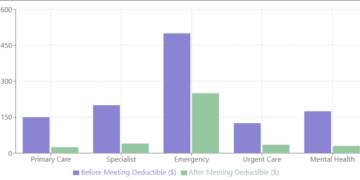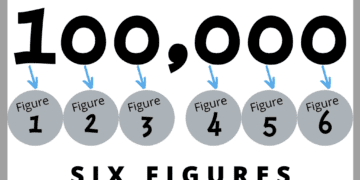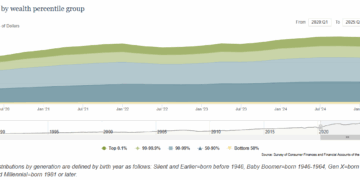President Trump has signed the One Big Beautiful Bill Act into law, and I want to walk you through the most significant portion that will affect nearly every American: Title VII Subtitle A, which covers comprehensive tax reform. This subtitle represents the largest overhaul of our tax system in recent years, and understanding its provisions is crucial for planning your financial future.
Title VII Subtitle A is organized into six major chapters, each addressing different aspects of tax policy. Let me break down what each means for you and your family.
Chapter 1: Permanent Tax Relief for Middle-Class Families and Workers
The first chapter makes several temporary tax provisions permanent while enhancing others. The most significant changes include:
Tax Rate Extensions: The reduced individual income tax rates that were set to expire are now permanent. This means the current tax brackets will continue indefinitely, providing certainty for long-term financial planning.
Enhanced Standard Deduction: The standard deduction increases substantially. For married couples filing jointly, it rises from $18,000 to $23,625. For single filers, it increases from $12,000 to $15,750. This means more of your income will be tax-free, effectively reducing your tax burden.
Senior Deduction: A new provision allows taxpayers aged 65 and older to claim an additional $6,000 deduction per person. For a married couple where both spouses are 65 or older, this represents an additional $12,000 in tax-free income. However, this benefit phases out for higher-income earners, beginning at $75,000 for individuals and $150,000 for married couples.
Child Tax Credit Enhancement: The Child Tax Credit increases from $2,000 to $2,200 per qualifying child. The refundable portion also increases to $1,400, and both amounts will be adjusted for inflation going forward. Importantly, the law now requires valid Social Security numbers for both the taxpayer and the child to claim this credit.
Business Income Deduction: The Section 199A deduction for qualified business income becomes more generous. The income thresholds where limitations begin to apply increase from $50,000 to $75,000 for individuals and from $100,000 to $150,000 for married couples. Additionally, there is now a minimum $400 deduction for active business owners with at least $1,000 in qualified business income.
Estate and Gift Tax: The estate tax exemption increases dramatically from $5 million to $15 million per person (adjusted for inflation), meaning fewer families will face estate taxes when transferring wealth to the next generation.
Chapter 2: Presidential Priorities for Middle-Class Tax Relief
This chapter implements several of President Trump’s signature campaign promises:
No Tax on Tips: Workers in traditionally tipped occupations can now deduct up to $25,000 in qualified tips annually. The deduction phases out for higher earners, beginning at $150,000 for individuals and $300,000 for married couples. This provision expires at the end of 2028, so it represents a four-year window of relief for service workers.
No Tax on Overtime: Qualified overtime compensation becomes deductible up to $12,500 for individuals and $25,000 for married couples. Like the tip provision, this phases out at higher income levels and expires in 2028.
No Tax on Car Loan Interest: Interest on car loans becomes deductible for vehicles purchased after December 31, 2024, subject to a $10,000 annual limit. The deduction applies only to vehicles manufactured in the United States and phases out for higher-income taxpayers. This provision also expires in 2028.
Trump Accounts: The law establishes new savings accounts for children under 18. These accounts receive automatic government contributions of $1,000 for eligible children born between 2025 and 2028. The accounts function similarly to retirement accounts but can be accessed when the child turns 18, with special tax advantages for longer holding periods.
Chapter 3: Business Tax Reforms and Investment Incentives
The business provisions focus on promoting domestic investment and competitiveness:
Full Expensing: Businesses can immediately deduct 100 percent of qualified property costs rather than depreciating them over time. This permanent provision should encourage business investment in equipment and facilities.
Research and Development: Domestic research and development expenses can once again be immediately deducted rather than amortized over multiple years. However, foreign research expenses must still be amortized over 15 years, encouraging companies to conduct research activities in the United States.
International Tax Changes: The law modifies several international tax provisions, including increasing the foreign tax credit for certain income and adjusting the tax on overseas earnings. These changes are designed to make the United States more competitive while ensuring appropriate taxation of international income.
Chapter 4: Investments in Families and Communities
This chapter expands support for families and community development:
Education Credits: The law creates a new tax credit for contributions to scholarship-granting organizations, allowing individuals to claim up to $1,700 annually for donations that fund educational scholarships for eligible students.
Employer Student Loan Assistance: The tax exclusion for employer payments on employee student loans becomes permanent, with inflation adjustments. Employers can pay up to $5,250 annually toward employee student loans without the employee owing taxes on this benefit.
529 Plan Expansions: Educational savings accounts can now be used for additional elementary and secondary education expenses, including tutoring, educational materials, and therapy services for students with disabilities. The annual withdrawal limit for K-12 expenses doubles from $10,000 to $20,000.
Community Development: The law makes permanent and enhances several community development programs, including the New Markets Tax Credit and Low-Income Housing Tax Credit, while creating new incentives for investment in opportunity zones.
Chapter 5: Energy Policy Changes
This chapter represents a significant shift in federal energy policy:
Green Energy Credit Terminations: Most renewable energy tax credits terminate much earlier than previously scheduled. The clean vehicle credit, solar and wind production credits, and various other green energy incentives end by 2025 or 2027, rather than continuing through the early 2030s.
Restrictions on Foreign Entities: New provisions prevent foreign-controlled entities, particularly those connected to certain countries, from claiming energy-related tax benefits. These restrictions aim to ensure that federal tax incentives support domestic rather than foreign-controlled energy development.
Traditional Energy Support: The law extends and modifies the clean fuel production credit to support domestic fuel production, including provisions that favor North American feedstocks and exclude certain international sources.
Chapter 6: Tax System Reforms and Enforcement
The final chapter addresses tax system integrity and includes various reforms:
Business Loss Limitations: The excess business loss limitation for non-corporate taxpayers becomes permanent, preventing wealthy individuals from using business losses to offset other income beyond specified thresholds.
Partnership Payment Rules: New rules require that payments from partnerships to partners for services be treated as guaranteed payments, subject to self-employment tax, closing a significant loophole.
Enhanced Enforcement: Several provisions strengthen tax enforcement, particularly regarding COVID-era employee retention credits, and establish new penalties for certain tax preparation activities.
What This Means for Different Groups
Working Families: The combination of permanent tax rate reductions, enhanced standard deductions, and increased child tax credits will reduce tax burdens for most middle-class families. The tip and overtime provisions provide additional relief for service workers and hourly employees.
Seniors: The new senior deduction provides significant tax relief for older Americans, potentially saving couples thousands of dollars annually in taxes.
Business Owners: The permanent full expensing provisions and enhanced business income deductions should encourage investment and provide ongoing tax benefits for domestic business activities.
High-Income Earners: Many provisions phase out at higher income levels, and some new limitations may increase taxes for wealthy taxpayers, particularly the partnership payment rules and business loss limitations.
Energy Sector: Traditional energy companies may benefit from continued incentives, while renewable energy companies face the early termination of many tax credits that supported their growth.
Looking Ahead
These changes represent the most comprehensive tax reform in years, with provisions that will affect virtually every American taxpayer. Many of the individual tax benefits are permanent, providing long-term certainty for financial planning. However, some of the most popular provisions, including the tip and overtime exclusions, are temporary and will require future legislative action to extend.
The law takes effect primarily for the 2025 tax year, though some provisions have different effective dates. I recommend consulting with a tax professional to understand how these changes will specifically affect your situation and to develop strategies for maximizing the benefits available to you under the new law.
This represents a fundamental shift toward a more business-friendly tax code while providing targeted relief for working families. The long-term implications will unfold over the coming years as these provisions are implemented and their economic effects become clear.
For more content, check out the following:
- Understanding Title I of the One Big Beautiful Bill Act: What These Agricultural and Nutrition Changes Mean for You
- Breaking Down the One Big Beautiful Bill Act: What Title II Means for Defense and National Security
- Breaking Down the One Big Beautiful Bill Act: Title III and Its Impact on Financial Oversight
- Breaking Down Title IV of the One Big Beautiful Bill Act: What It Means for Commerce, Science, and Transportation
- Understanding Title V of the One Big Beautiful Bill Act: Energy and Natural Resources
- Understanding Title VI of the One Big Beautiful Bill Act: What It Means for Environmental Programs and You

















































